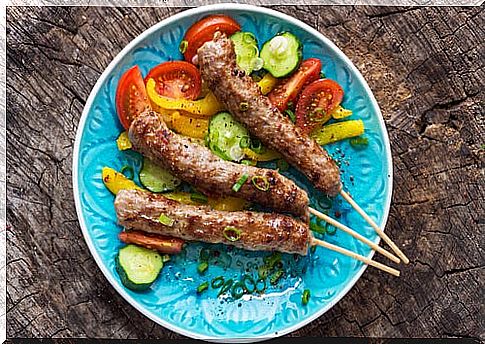Flexitarians: Flexible Vegetarians

When it comes to eating, the options are endless, since we have a wide variety of recipes and foods. Now, each one chooses for his diet, according to what he feels like, according to his thinking and according to his possibilities. Nowadays, the vegetarian and vegan diet is very well known but have you heard anything about flexitarians?
It is a type of diet that is gaining popularity. Its rise is the result of people beginning to adopt a more sustainable lifestyle. Below are more details about this type of diet that has so many benefits.
Flexitarians, what does your diet consist of?
The word flexitarian comes from the combination of two English words, flexible plus vegetarian. The term was first coined in 1992, in an article that reporter Linda Anthony wrote. Years later, in 2003, the word flexitarian was chosen as the most useful word of the year, according to the American Dialect Society.
But what do we mean when we talk about flexitarians? To people who include an occasional vegetarian diet. So it could be a flexible vegetarianism.

However, it should be noted that this type of diet is not usually recognized by the vegetarian community. This is because within vegetarianism the consumption of meat is not accepted for any reason. However, the number of people who adopt this type of diet is currently increasing.
Now, do flexitarians have a philosophy on animal abuse like that of vegetarians? There is no exhaustive answer to this question. There will be people who have it and people who don’t, but what truly defines a flexitarian is that they have opted for a healthy and environmentally sustainable lifestyle.
But what is the diet of flexitarians like? We show you its main characteristics.
- The flexitarian diet is flexible. Well, it allows you to eat both meat and vegetables, but opting for meat in a circumstantial way, to promote a healthier and more environmentally sustainable lifestyle.
- Vegetarian diet as a base. What flexitarians consume the most are vegetables. In fact, they do it most of the time.
- Healthy. Flexitarians’ diet is balanced and healthy, as it does not only consist of the occasional consumption of meat. The key is that the choice of food goes hand in hand with well-being.
- Sustainability Flexitarians are concerned about unnecessary green spending for food. Therefore, they only consume these products occasionally.
- Flexibility. Flexitarians are flexible with their diet. Although they want it to be healthy and sustainable, they are not rigid when it comes to consumption.
The flexitarian diet is easier to follow socially than the vegetarian one. People who have this form of diet can eat meat when they have a social event or want to go out to eat something outside the home. This, without a doubt, does not generate so much conflict between lifestyle and contact with their social environment.
How do flexitarians differ from vegetarians and semi-vegetarians?
One who eats a vegetarian diet once a week is not called a flexitarian. You must maintain a vegetarian diet most of the time and make a occasional consumption of meat. Also, if vegetarians eat meat, they are breaking their eating pattern.
Nor are flexitarians synonymous with semi-vegetarians. The difference is that semi-vegetarians do not have red meat in their diet, whereas flexitarians do.
So the key to flexitarianism is frequency. So, as we have indicated, it is a habitual vegetarian consumption, combined with an eventual meat consumption. So each flexitarian can do whatever combination he wants. That is to say, in the occasional consumption, opt for some or all meats.

Benefits of the flexitarian diet
The flexitarian diet has multiple benefits, we show you some of them:
- Helps prevent heart disease.
- Less budget is needed for this type of diet.
- This way of eating reduces the risk of developing type 2 diabetes.
- Greater environmental sustainability.
- It allows you to enjoy all kinds of food.
- Promotes a longer life.
- It can help you lose weight.
- It is not a rigid diet that leads to obsession.
As reflected in his study by Abbigail B.Pace, eating a flexitarian diet reduces the risks of breast, prostate and colon cancer if accompanied by physical activity.
At present, varieties of this diet are emerging, such as the proposal called V6 by journalist Mark Bittman. This diet suggests not eating any food from an animal before 6 in the afternoon.
Also, there is already a book with recipes for this type of diet. Its author, Down Jackson Blatner, gives advice on leading a healthy life through flexitarianism.
As can be seen, the flexitarian diet is a form of conscious eating. How beneficial it is for health depends on what each person consumes, because ultimately it is a philosophy to improve our well-being and that of the environment.









